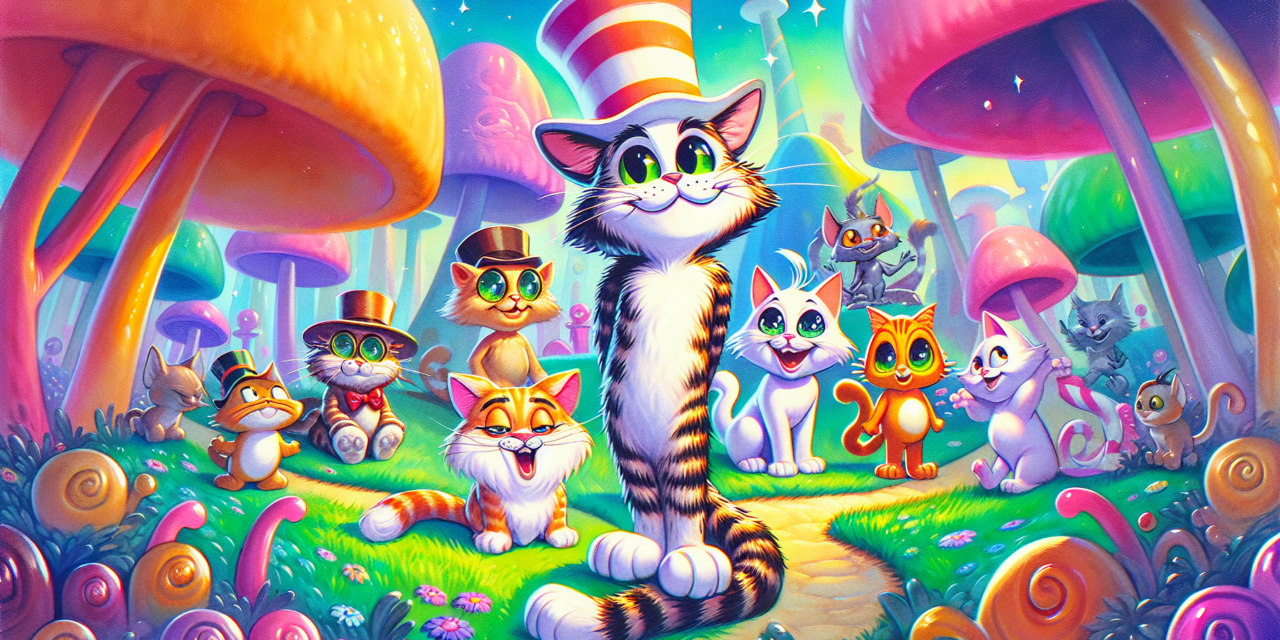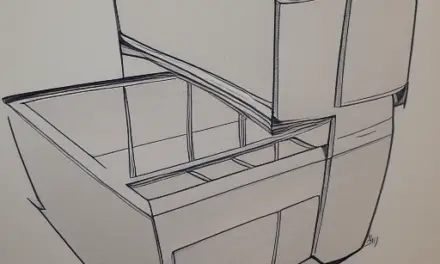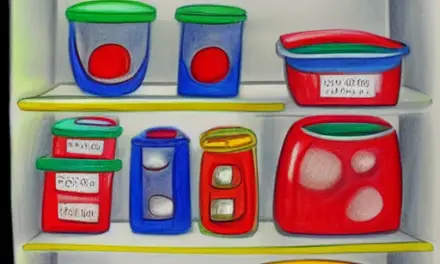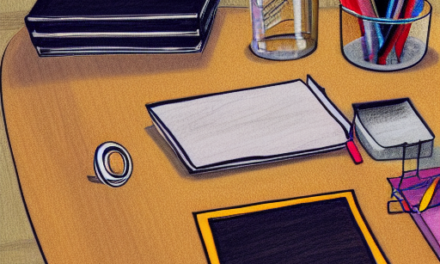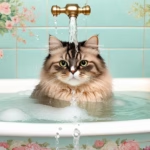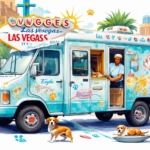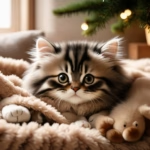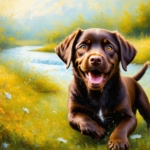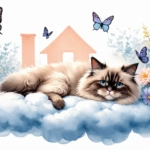Welcome to the whimsical world of animated cats, where feline charm meets creativity in the realm of cartoons! From the iconic Cat in the Hat to the beloved characters that have graced our screens over the decades, this article will explore the rich tapestry of cat cartoon characters that have shaped pop culture. We will delve into the history of cartoon cats, examining the evolution of these characters and their impact on television and film. Discover who the most famous animated cat is, learn about the interactive toys for cats inspired by these characters, and uncover the artistic techniques behind cartoon cat drawings. Join us as we celebrate the charm and creativity of animated cats and their enduring legacy in entertainment!
What is the most famous animated cat?
When discussing the most famous animated cat, several iconic characters come to mind, each contributing uniquely to pop culture and animation history. Here are some of the most notable animated cat characters that have shaped our entertainment landscape:
Animated cat characters that shaped pop culture
- Garfield (Garfield) – Garfield is arguably the most iconic animated cat, known for his sarcastic humor and love for lasagna. Created by cartoonist Jim Davis, Garfield made his debut in a comic strip on June 19, 1978. His character embodies a lazy, cynical attitude, often expressing disdain for Mondays and a strong preference for food and sleep. The comic strip has expanded into a successful animated television series, movies, and merchandise, solidifying Garfield’s status in popular culture.
- Tom (Tom and Jerry) – Another legendary animated cat is Tom from the classic series “Tom and Jerry,” created by William Hanna and Joseph Barbera in 1940. Tom is characterized by his relentless pursuit of Jerry, the clever mouse, leading to comedic antics that have entertained audiences for generations. The show’s slapstick humor and timeless appeal have made Tom a staple in animation history.
- Sylvester (Looney Tunes) – Sylvester the Cat, known for his lisp and his catchphrase “Sufferin’ succotash!”, is a beloved character from the Looney Tunes franchise. Created by Friz Freleng, Sylvester often finds himself in humorous predicaments while trying to catch Tweety Bird or other characters, showcasing the classic cat-and-mouse dynamic.
- Puss in Boots (Shrek franchise) – Puss in Boots, voiced by Antonio Banderas, first appeared in “Shrek 2” and quickly became a fan favorite. His charming personality and swashbuckling adventures led to a standalone film, further establishing him as a prominent animated cat in modern cinema.
These animated cats not only represent significant cultural icons but also reflect the evolution of animation and storytelling. Their enduring popularity highlights the universal appeal of feline characters in entertainment.
The evolution of animated cats in cartoons
The journey of animated cats in cartoons has been fascinating, showcasing how these characters have evolved over the decades. Early animated cats often portrayed simple, slapstick humor, primarily focusing on physical comedy and exaggerated expressions. As animation technology advanced, so did the complexity of these characters.
In the 1980s and 1990s, we saw a shift towards more relatable and multi-dimensional cat characters. Shows like “The Cat in the Hat” introduced educational elements, while “Garfield and Friends” combined humor with life lessons, appealing to both children and adults. This evolution reflects broader trends in animation, where character development and storytelling became paramount.
Today, animated cats continue to thrive in various media, from television shows to movies and even interactive toys. The integration of technology has allowed for innovative storytelling methods, making animated cats more engaging than ever. For example, interactive toy cats, such as the Go Cat Da Purr Peller, have become popular, blending play with the charm of animated characters.
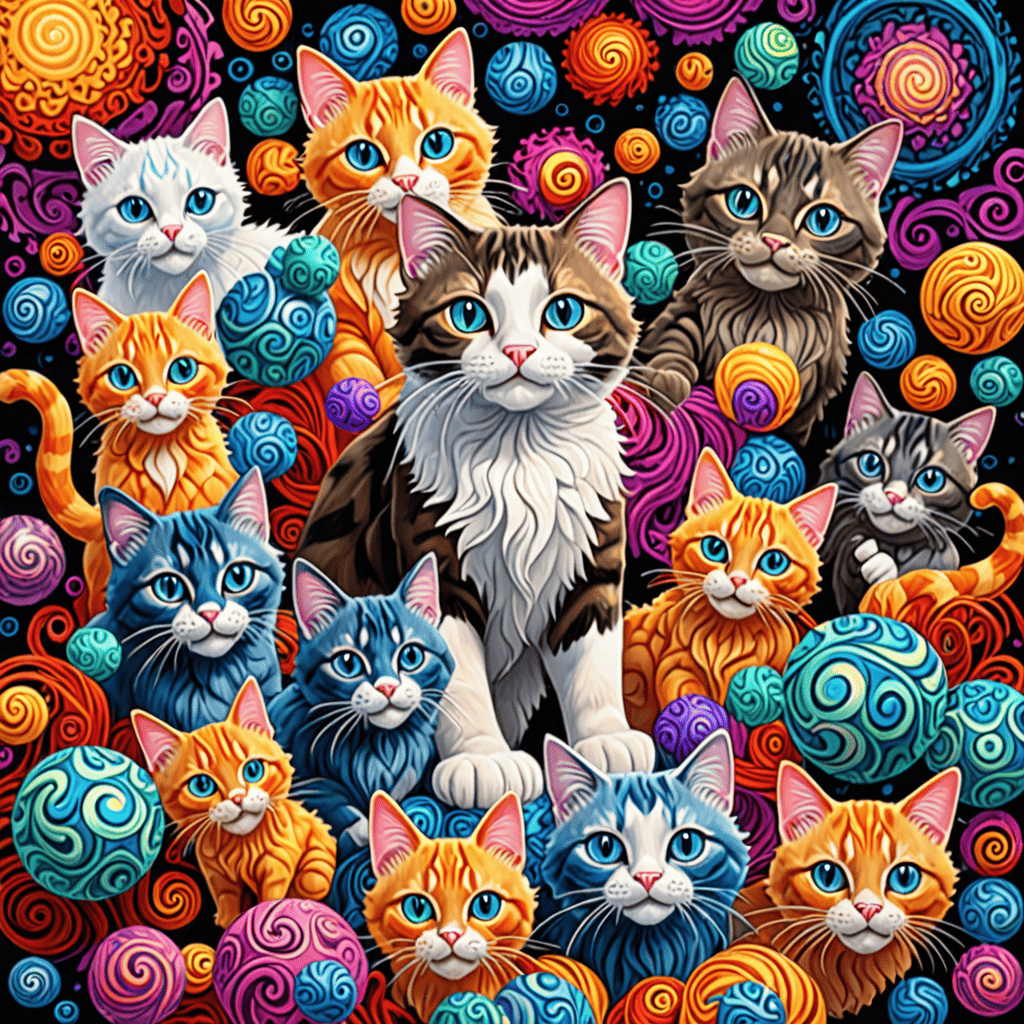
What was the cartoon cat before Garfield?
The cartoon cat that preceded Garfield is Heathcliff, a character created by George Gately. The Heathcliff comic strip debuted in 1973, five years before the first Garfield strip was published by Jim Davis in 1978. Heathcliff is known for its humorous single-panel gags, often featuring the titular character engaging in mischievous antics and interactions with other animals and humans. The strip’s style and themes share some similarities with Garfield, particularly in its portrayal of a cat’s perspective on life. Heathcliff’s popularity led to various adaptations, including animated television series, which further solidified its place in pop culture. For more detailed information, you can refer to the Heathcliff entry on Wikipedia.
The history of cartoon cats leading to Garfield
The evolution of cartoon cats has been a fascinating journey, with various characters paving the way for the iconic Garfield. Before Heathcliff, several animated cats captured audiences’ hearts, each contributing to the rich tapestry of cat cartoons. Characters like Felix the Cat, who debuted in the silent film era, showcased the charm and humor that animated cats could bring to the screen. Felix’s adventures set a precedent for future feline characters, blending mischief with endearing qualities.
As the animation industry evolved, so did the portrayal of cats in cartoons. The 1960s and 70s saw the rise of characters like Top Cat and the Cat in the Hat, who further popularized the animated cat trope. These characters not only entertained but also reflected societal trends and humor of their times. The transition from these early characters to Garfield marked a significant shift in how animated cats were depicted, focusing more on personality and relatable humor. Garfield’s laid-back attitude and love for lasagna resonated with audiences, solidifying his status as a cultural icon.
Iconic cartoon cat characters before the 1980s
Before the 1980s, several iconic cartoon cat characters laid the groundwork for future feline stars. Felix the Cat, with his mischievous grin and whimsical adventures, was one of the first animated cats to gain widespread fame. His silent film antics captivated audiences and established a blueprint for animated cat characters.
Other notable mentions include the Cat in the Hat, a beloved character from Dr. Seuss’s books, who brought a playful and chaotic energy to children’s literature and animation. Additionally, characters like Tom from “Tom and Jerry” showcased the classic cat-and-mouse dynamic, blending humor with slapstick comedy. These characters not only entertained but also influenced the development of future animated cats, paving the way for Garfield and beyond.
Who is the most famous cat on TV?
The most famous cat on TV includes a variety of iconic animated felines that have captured audiences over the years. Here are some of the most notable:
- Garfield – From the comic strip to the animated series “Garfield and Friends,” this lasagna-loving cat is known for his sarcastic humor and love for food. Created by Jim Davis, Garfield first appeared in 1978 and has since become a cultural icon.
- Tom – The mischievous cat from “The Tom and Jerry Show,” created by William Hanna and Joseph Barbera, has been entertaining audiences since 1940. Tom’s relentless pursuit of Jerry the mouse has made him a staple of animated television.
- Felix the Cat – One of the earliest animated characters, Felix debuted in silent films in the 1920s. His adventures have made him a classic figure in animation history, and he remains a beloved character.
- Sylvester – Known for his catchphrase “Sufferin’ succotash,” Sylvester is a prominent character in the Looney Tunes franchise. His attempts to catch Tweety Bird have made him a memorable figure since his introduction in 1945.
- Top Cat – The leader of a group of alley cats in the animated series “Top Cat,” this character is known for his charm and clever schemes. The show aired in the early 1960s and has maintained a loyal fan base.
- The Cat in the Hat – From Dr. Seuss’s beloved children’s book, this whimsical character has been adapted into various animated specials and movies, teaching children about fun and imagination since his debut in 1957.
These characters not only represent the charm of animated felines but also reflect the evolution of animation and storytelling in television. Their enduring popularity showcases the impact of animated cats in popular culture.
Analyzing the popularity of animated cats in television
Animated cats have carved a significant niche in television, captivating audiences with their unique personalities and comedic antics. The appeal of these characters often lies in their relatability and the humor they bring to everyday situations. For instance, Garfield’s lazy demeanor resonates with many, while Tom’s relentless pursuit of Jerry highlights the classic cat-and-mouse dynamic that viewers find entertaining.
Moreover, the animation style used in these shows contributes to their charm. Bright colors, exaggerated expressions, and whimsical scenarios make these cartoons visually appealing, especially to younger audiences. The combination of humor, relatable themes, and engaging animation has solidified the place of animated cats in television history.
Memorable TV shows featuring animated cats
Several TV shows have prominently featured animated cats, each contributing to the legacy of these beloved characters. Some notable examples include:
- Garfield and Friends – This series showcases Garfield’s adventures alongside his friends, including Odie and Nermal, blending humor with life lessons.
- Tom and Jerry – A classic that has entertained generations, this show features the comedic rivalry between Tom and Jerry, highlighting the antics of both characters.
- The Cat in the Hat Knows a Lot About That! – An educational series that follows the Cat in the Hat as he explores various topics with his friends, making learning fun for children.
- Top Cat – This show follows the clever schemes of Top Cat and his gang, showcasing their adventures in the city.
These shows not only highlight the charm of animated cats but also reflect the evolution of storytelling in animation, making them memorable parts of television history.
What the heck is cartoon cat?
Cartoon Cat is a fictional character created by the artist Trevor Henderson, known for his eerie and unsettling design. This creature is depicted as a large, anthropomorphic cat with exaggerated features reminiscent of classic cartoon characters, such as oversized eyes and a wide, toothy grin. Cartoon Cat first gained popularity through social media and various online platforms, where it has been featured in horror-themed stories and videos, particularly on YouTube.
The character is often associated with urban legends and creepypasta, a genre of internet horror fiction. Cartoon Cat is said to possess supernatural abilities, including the power to stretch its body and manipulate its surroundings, making it a formidable figure in horror narratives. The lore surrounding Cartoon Cat suggests that it may be a manifestation of childhood fears and the darker side of nostalgia associated with vintage cartoons.
Understanding the phenomenon of cartoon cat memes
The rise of Cartoon Cat memes highlights the intersection of nostalgia and horror in modern digital culture. These memes often play on the unsettling aspects of the character, combining humor with a sense of unease. As users share cat cartoon images and animated cat toys, they contribute to a broader conversation about how animated cats can evoke both joy and fear. This duality makes Cartoon Cat a compelling subject for meme creation, as it taps into the collective consciousness of internet users who grew up with classic cartoons yet are now drawn to darker themes.
The impact of animated cat memes on social media
Animated cat memes, including those featuring Cartoon Cat, have significantly influenced social media engagement. These memes often go viral, as they resonate with a wide audience who appreciate the blend of humor and horror. Platforms like Instagram and Twitter are flooded with cartoon cat drawings and cat images cartoon, showcasing the creativity of users who reinterpret the character in various styles. The popularity of these memes not only entertains but also fosters community discussions around the themes of nostalgia, fear, and the evolution of animation.
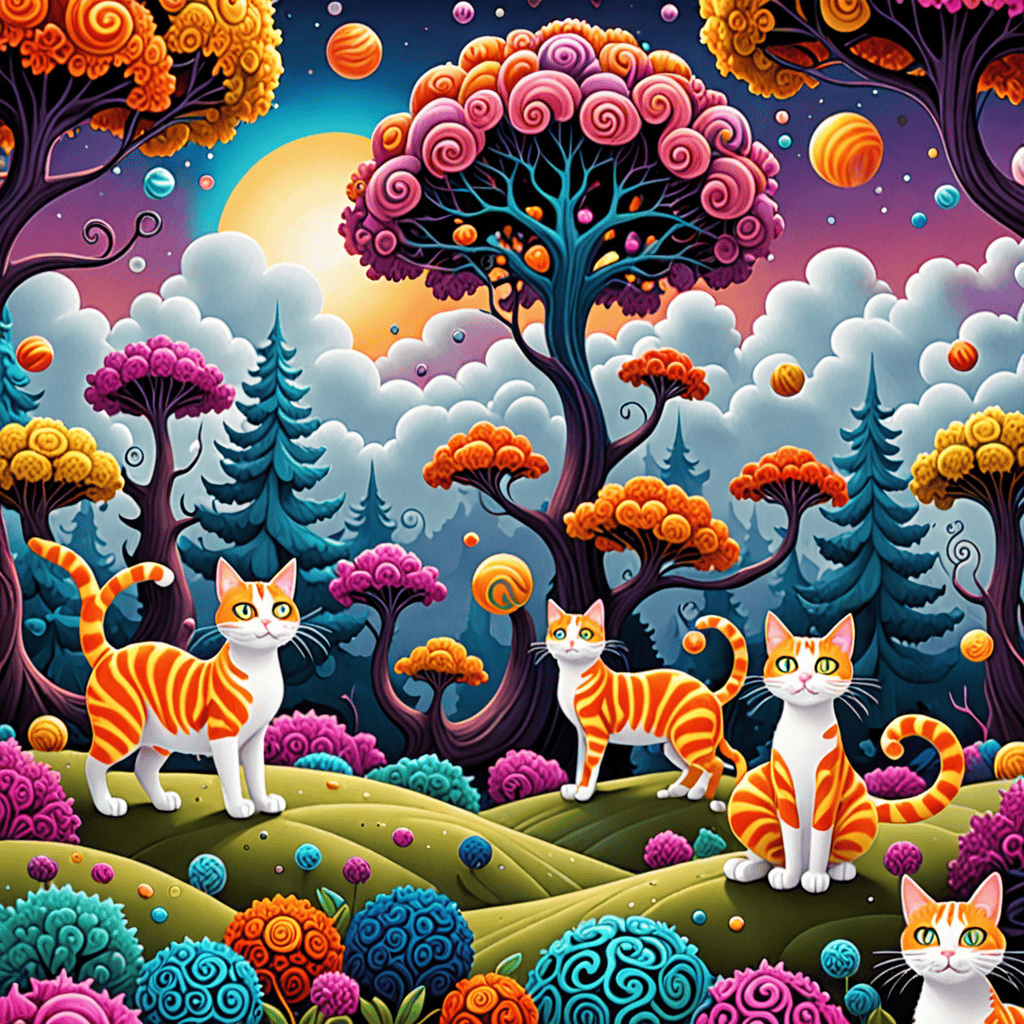
Who is the most popular Disney cat?
When discussing the most popular Disney cat, several iconic feline characters come to mind, each with their unique charm and fan following. Here are some of the most beloved Disney cats:
- The Cheshire Cat (Alice in Wonderland)
Known for his mischievous grin and ability to appear and disappear at will, the Cheshire Cat is a symbol of whimsy and mystery in Lewis Carroll’s classic tale. His philosophical musings and playful nature have made him a favorite among fans. - Figaro (Pinocchio)
Figaro, Geppetto’s pet cat, is adored for his playful antics and loyalty. His character adds warmth and humor to the story, making him one of Disney’s most cherished cats. - Mochi (Big Hero 6)
Mochi is a fluffy, lovable cat who belongs to Hiro Hamada. His cute demeanor and playful interactions with the characters have endeared him to audiences, especially in the context of the film’s heartwarming themes. - Sergeant Tibbs (101 Dalmatians)
As a brave and resourceful cat, Sergeant Tibbs plays a crucial role in the rescue of the Dalmatians. His courage and cleverness make him a standout character in this classic film. - Lucifer (Cinderella)
Lucifer, the cunning and sly cat from Cinderella, is known for his antagonistic role. Despite his villainous traits, his comedic moments and interactions with other characters have made him memorable. - Mittens (Bolt)
Mittens is a street-smart cat who helps Bolt, the main character, navigate the real world. Her character development and witty personality resonate with viewers, showcasing the importance of friendship. - Oliver (Oliver & Company)
As the main character in Oliver & Company, Oliver is an adventurous kitten who seeks a family. His journey through New York City captures the hearts of many, making him a beloved character. - Yzma (The Emperor’s New Groove)
While primarily known as a villain, Yzma’s cat form, which she transforms into, adds a humorous twist to her character. Her eccentricity and memorable quotes have made her a fan favorite.
These characters not only represent the diversity of feline personalities in Disney films but also highlight the emotional connections that audiences have with them. Each cat brings a unique story and charm, contributing to their popularity in Disney’s animated legacy.
Exploring Disney’s animated cat characters
Disney has created a plethora of animated cat characters that have left a lasting impact on audiences. From the whimsical Cheshire Cat to the adventurous Oliver, these characters embody various traits that resonate with viewers. The charm of these animated cats often lies in their ability to convey emotions and lessons through their stories. For instance, Figaro’s loyalty and Mischievous nature reflect the importance of companionship, while Mittens showcases the value of friendship and growth.
In addition to their individual stories, Disney’s animated cats often serve as symbols of broader themes, such as bravery, loyalty, and the quest for identity. This rich tapestry of character development not only entertains but also provides valuable life lessons, making them memorable figures in the world of animation.
The legacy of Disney’s famous cat cartoons
The legacy of Disney’s famous cat cartoons extends beyond mere entertainment; it has influenced pop culture and inspired countless adaptations and merchandise. The unique personalities of these animated cats have led to a variety of products, from toys to clothing, allowing fans to connect with their favorite characters in everyday life. For example, the popularity of the Cheshire Cat has spawned a range of merchandise, including plush toys and apparel, showcasing his iconic grin.
Moreover, Disney’s animated cat characters have paved the way for future feline representations in animation. Their enduring popularity continues to inspire new stories and adaptations, ensuring that the legacy of these beloved cats will live on for generations to come. As we explore the world of animated cats, it’s clear that their charm and appeal are timeless, making them a staple in both animation and popular culture.
What was the first cartoon cat?
The first cartoon cat is Felix the Cat, who is recognized as the world’s first animated film star. Felix made his debut as ‘Master Tom’ in the silent animated short titled Feline Follies, which was released by Paramount Studios on November 9, 1919. This iconic character gained immense popularity during the silent film era, paving the way for future animated characters. Notably, Felix’s creation predates Mickey Mouse’s first appearance in Disney’s Steamboat Willie by nearly nine years, as Mickey debuted on November 18, 1928. Felix the Cat’s influence on animation and pop culture is significant, as he introduced many elements that would become staples in animated storytelling. For further reading on the history of animation and the impact of Felix the Cat, refer to sources such as the Animation Research Library and the book Of Mice and Magic: A History of American Animated Cartoons by Leonard Maltin.
The origins of the first animated cat in history
Felix the Cat’s origins are rooted in the early 20th century, a time when animation was just beginning to take shape as a popular form of entertainment. Created by Pat Sullivan and Otto Messmer, Felix quickly became a cultural phenomenon, captivating audiences with his mischievous antics and unique personality. His design, characterized by a black body, large expressive eyes, and a distinctive tail, set the standard for future animated cat characters. Felix’s adventures often involved surreal and whimsical elements, which were groundbreaking for the time and influenced many subsequent cartoons.
Milestones in the development of cartoon cats
Following Felix, several other animated cats emerged, each contributing to the evolution of cartoon cats in animation. Characters like Tom from Tom and Jerry and the iconic Sylvester from Looney Tunes showcased the versatility of animated cats in various comedic scenarios. The introduction of these characters not only solidified the cat’s role in animation but also paved the way for modern animated cat characters, such as the beloved characters from Disney and other major studios. Today, animated cats continue to thrive in various forms of media, including television shows and movies, reflecting their lasting appeal in popular culture.
Animated Cat Drawing Techniques
How to Draw Cartoon Cats: Tips and Tricks
Drawing animated cats can be a fun and rewarding experience, whether you’re a beginner or an experienced artist. Here are some essential tips and tricks to help you create captivating cat cartoon drawings:
1. **Start with Basic Shapes**: Begin by sketching simple shapes like circles and ovals to outline the cat’s head and body. This foundational step will help you maintain proportions.
2. **Focus on Facial Features**: Cats have expressive faces. Pay attention to the eyes, nose, and mouth. Experiment with different expressions to bring your animated cat to life.
3. **Add Unique Characteristics**: Incorporate distinctive traits that make your cat character stand out, such as unique fur patterns or accessories like a collar or a hat.
4. **Practice Different Poses**: Draw your cat in various poses—sitting, jumping, or playing. This will enhance your skills and give your character more personality.
5. **Use Reference Images**: Look at pictures of cats or animated cat characters for inspiration. Websites like [The Cat API](https://www.thecatapi.com/) can provide a plethora of cat images cartoon to help you visualize your drawings.
By following these tips, you can create engaging cat cartoon drawings that capture the charm of animated cats.
Popular Animated Cat Drawing Styles and Inspirations
When it comes to animated cat drawing styles, there are several popular approaches that can inspire your creativity:
1. **Classic Cartoon Style**: This style often features exaggerated features and vibrant colors, reminiscent of famous cat cartoons like *Tom and Jerry* or *The Cat in the Hat*. Emphasizing large eyes and playful expressions can make your drawings more appealing.
2. **Realistic Style**: For those looking to create more lifelike representations, focusing on fur texture and anatomical accuracy is key. This style can be seen in animated films like *The Aristocats* or *Puss in Boots*.
3. **Chibi Style**: Originating from Japanese anime, chibi style involves drawing characters with oversized heads and small bodies. This cute animated cat style is perfect for creating endearing cat characters that resonate with audiences.
4. **Minimalist Style**: This approach uses simple lines and shapes to convey the essence of a cat without intricate details. It’s effective for creating modern, sleek designs that can be used in various media, including merchandise and digital art.
Exploring these styles can enhance your animated cat drawing skills and inspire you to create unique cat characters that stand out in the world of animation.

